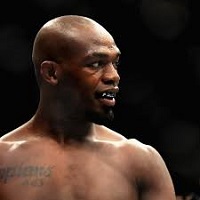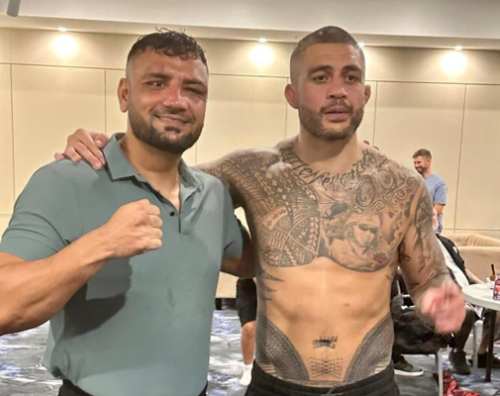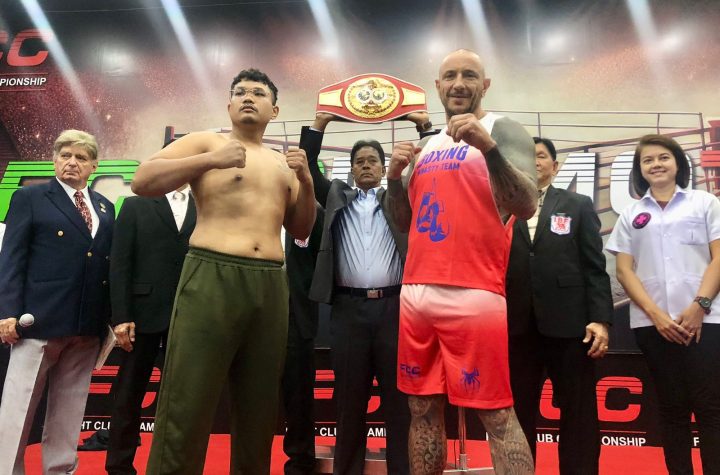
By Connor Ruebusch@BoxingBusch
Okay, so UFC 232 is already a complete sh-tshow. For any readers not already aware, that first sentence should be enough to tell you that Jon Jones is one half of the card’s main event.
RELATED
UFC 232 ‘Jones Vs. Gustafsson 2’ Top Three Fights
Sometime earlier this month, the erstwhile light heavyweight champ was pinged by the US Anti-Doping Association for the presence of the steroid turinabol in his blood tests. This was the same substance which saw his most recent victory overturned into a no contest—a result which followed yet another positive test for performance enhancing drugs in 2016. It took the UFC several weeks to notify the other fighters scheduled for the event, and more than a few of them only found out via the promotion’s official responses on social media.
RELATED
The 10 Worst PED Fails in MMA History
Perhaps this would not have been such a despicable act had the UFC not decided to move the event from Las Vegas to Los Angeles, in search of a commission lenient enough to allow Jones to stay on the bill, only a week before the scheduled date of December 29th. Dozens of athletes, most of whom need this single paycheck far more than Jones, are now expected to change their travel plans, undoubtedly affecting their preparation, incurring additional costs to themselves and their camps, and subjecting those paychecks to California’s higher tax rate, to boot.
All of this just so that Jon Jones could stay on the card to rematch Alexander Gustafsson, whom many regard as his greatest challenge.
Fans should, perhaps, be advised to save their money and skip purchasing this card. For many, however, the actions of Jones, and the promoters and commissioners exploiting his name value, will only give them more reason to tune in. Many still believe that Gustafsson deserved the victory over Jones in their first fight, and they will be eager to see revenge exacted. If Jones has ever deserved a humiliating defeat, only Daniel Cormier could think of a better time than now.
So, what are Alexander’s chances?
As is always the case with rematches, this question is best examined by looking back to the first fight. Jones and Gustafsson met at UFC 165, in September of 2013. The Mauler was challenging for Jones’ light heavyweight title, which he had defended successfully five times before. Despite his own six-fight winning streak, Gustafsson entered the Octagon a six-to-one underdog. An overwhelming consensus held that the Swede had little chance of victory against a fighter who was already being hailed as the greatest of all time. So desperate was the UFC to find any salable narrative for the mismatch that they released this infamously goofy poster for the event.
:no_upscale()/cdn.vox-cdn.com/uploads/chorus_asset/file/13653264/Screen_Shot_2013_07_22_at_2.13.02_PM.png)
At the time, fans critical of Jones were fond of raising the banal argument that he was only successful due to his incredible 84-inch wingspan. “Hey,” said the UFC. “This Gustafsson guy is also tall. You should watch.”
Those who did choose to tune in were surprised, to say the least.
Gustafsson stung Jones with hard punches and kicks from the outset. Shortly into the first round, a glancing right hand tore open the champion’s eyebrow. He looked for a few takedowns, and Gustafsson rebuffed them, refusing 10 successive shots until Jones finally managed to ground him in the fifth round. More shocking than that, however, was the takedown Gustafsson himself completed in the opening frame. It was the first time Jones had ever been taken down, and to this day only the decorated wrestler Daniel Cormier has repeated the feat.
Over the course of five rounds, Gustafsson hit Jones 110 times, when no one had ever landed more than 50 before. Five years and four fights later, no one else has managed to crack 60.
When Jones was handed the decision win after all of this, many fans were outraged. How on earth could Jones have picked up four rounds—as two ringside judges saw it—when the Mauler had so thoroughly touched him up? Gustafsson himself still claims to be the only man to ever best Jon Jones, and there is no shortage of fight fans who support him to this day.
Before we become too enamored of Gustafsson’s output, however, we ought to compare his numbers to those of Jones.
Where Alex connected on 110 of his 288 significant strikes, Jones found the mark on 134 of 217. In the first round, which plenty of viewers (including UFC commentator Joe Rogan) saw going Gustafsson’s way, Jones outlanded the challenger 28 to 19. In fact, the champion outlanded the the challenger in every round but the fifth—the frame in which he scored his first takedown of the fight, and very clearly landed the better blows, including more than a couple crushing head kicks. Both men allowed only one takedown apiece, with neither able to convert his shot into any significant offense or control on the ground.
That Jones certifiably outlanded Gustafsson throughout the fight is certainly some sort of evidence that the former champ’s toughest defense was not quite as close as it had first appeared, though it was undeniably competitive.
Still, stats can only ever tell part of the story. We have already acknowledged that Jones won the fifth round by virtue of landing the better strikes, despite both men connecting with the same number. Likewise, he secured the fourth round when he stunned Gustafsson with one of his signature spinning elbows. Without that blow, the two men would have found the mark on 26 strikes each. Yet, the Swede would have had to dole out some very significant damage to outweigh the value of that one dazzling attack, even had he landed at a higher clip.
Irrespective of Gustafsson’s unexpected success, only Jones can be said to have ended the contest with two rounds incontrovertibly in the bank. At the very least, this makes it plain that Jones would only have needed to secure one of the three previous rounds—all of them close and competitive—in order to justify the decision.
Why, then, did it seem so clear to so many that Gustafsson had won the fight?
The concept of “underdog bias” must play some part. At the time of UFC 165, Jones’ dominance was unquestioned. His list of legendary scalps was long and impressive. Gustafsson’s most recent win, on the other hand, was a surprisingly scrappy bout with Shogun Rua (whom Jones had handily obliterated to win the title two years earlier), and that was preceded by a somewhat underwhelming victory over Thiago Silva, who had not won a fight himself in nearly three years.
Jones wasn’t just expected to beat Gustafsson. He was expected to destroy him, so much so that a great many fans simply weren’t interested in watching the fight. Though Jones was regarded as a reliable pay-per-view draw even then, UFC 165 aired in only 300,000 households (legally, at least). A far cry from the 700,000 Jon had netted only a year prior for his fight with Rashad Evans.
With such strong expectations of a one-sided defeat, the first few punches Gustafsson landed were more than a little eye-catching. Instantly, the preconceived narrative was challenged. When Gustafsson just kept on scoring, it became clear that this was not the mismatch fans had expected. In fact, less than two rounds in, it was already the toughest fight of Jon Jones’ entire career by a mile.
We can square this subversion of expectations by simply saying that fans and analysts alike—this one included—had simply overlooked a few key elements of the style matchup. Whether thanks to his size or his skillset, Gustafsson had more to offer Jones than most of us had realized.
Even so, it was all but impossible to view the fight for the first time with this rational thought in mind. Rather, each punch Alexander landed stood in stark and starker contrast to the narrative of the matchup. The man was supposed to fall flat, and instead he was making the champion work hard, and marking up his face, to boot. When no success is expected, any success seems dramatic.
But fights are not scored on the basis of expectation.
None of this is intended to discount the success that Gustafsson did have. As noted above, no other opponent has ever given Jones more trouble. And because we are here not only to argue that Jones deserved the win last time, but also to examine how Gustafsson might be able to build on his success in the rematch, it behooves us to ask: how exactly was he able to compete with Jones so effectively?
For one, the UFC’s hackneyed marketing efforts may have been more insightful than anyone initially realized. It has always been meaningless to denigrate Jones success on the basis of his size. Though his style certainly is built on the foundation of his height and reach, he nonetheless deserves credit for making the most of that unusual frame. Still, Jones was clearly uncomfortable facing down the first man capable of fighting effectively from his preferred distance. The only other opponent to have made Jones look anything other than incredible was Ovince Saint Preux. At six-foot-three with an 80-inch wingspan, he is about the same size as Gustafsson. OSP never troubled Jones half as much as Alex did, but his reach alone seemed to cause problems.
Gustafsson’s height and length allowed him to score from long range, without having to wander into the killer clinch for which Jones is rightly renowned. But he still fell prey to Jones’ greatest weapon: his staying power. Not only is Jones extremely durable, but he can push and maintain a fast pace for five hard rounds. His movements—even the most explosive and dynamic ones—are economical and controlled, meaning that he can outlast most light heavyweights even without adequate preparation.
In order to compete with Jones, and his dazzling complement of punches, elbows, knees, takedowns, and kicks of every description, Gustafsson had no choice but to move. A lot. Even with Joe Rogan fawning over his comparatively smoother and more natural boxing mechanics, Gustafsson could not hope to maintain his approach for the duration of the bout. Round three may have been his best of the fight, and yet by the end of it, Gustafsson was sucking wind. Jones was looking significantly worse for the wear, but his gas tank remained confoundingly full.
This still sounds like a style matchup that could—and even should—favor Gustafsson. But this was a Jon Jones fight, and that means X-factors. After the Gustafsson fight, Jones revealed that he had spent the majority of the training camp overlooking his opponent, mostly in favor of wild partying. It was two years after UFC 165 that Jones tested positive for cocaine metabolites; few suspect that it was the first time such chemicals had entered his system.
Was Jones giving a genuine assessment of the lackluster preparation heading into the first bout, or was he merely making an excuse for the performance? With Jon Jones, it’s always hard to tell.
Whatever the case, this is the truth: Jon Jones defeated Alexander Gustafsson at UFC 165, fair and square. The fight was close—undeniably the closest of Jones’ career—but it was also clear enough to patently discount any claims of robbery. If Gustafsson has improved in any areas, Jones seems to have improved even more dramatically.
Disagree with this assessment, and you have yourself a good reason to watch UFC 232. This time around, Gustafsson could really do it. If, however, seeing Jon Jones lose is your only reason for tuning in, and you find yourself finally second-guessing that “XxXMauler_True_ChampxXx” screen name, you might consider giving the event a miss, if only to reward the UFC for the latest in a long line of greedy, thoughtless, and downright disrespectful business practices.
At the very least, you could always take Dana White’s time-honored advice: don’t buy the pay-per-view, dummy.





More News
Unconscionable Betrayal: Tyson Pedro Camp’s Shameful Swindling of Taimoor Khan
Casimero TKO’s Sanchez in 1st round
Raquinel wins WBC Continental Americas super flyweight title